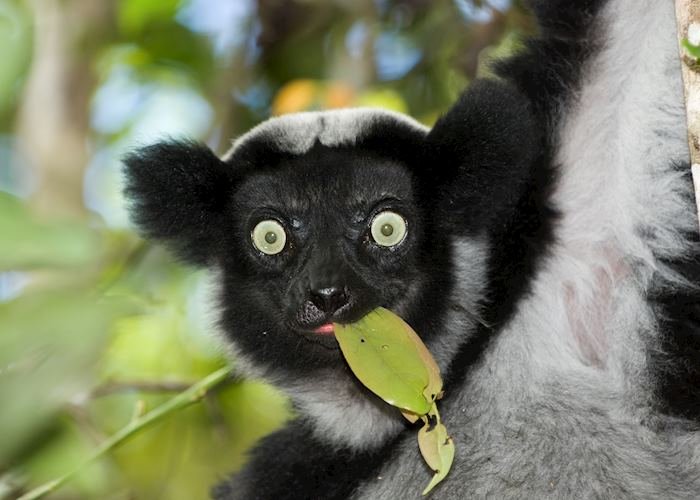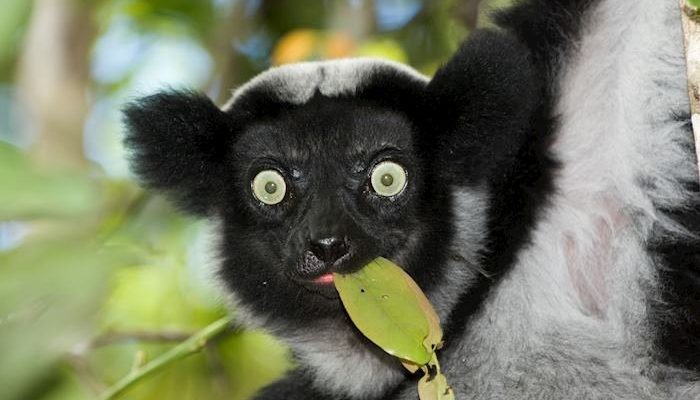
Indris are fascinating not just for their appearance, with their striking black and white fur, but also for their adaptations. They’re almost like acrobats of the forest, leaping between treetops with grace. How do they manage to thrive where many others would struggle? Let’s explore the remarkable strategies that indris use to navigate and survive in their harsh environments.
The Unique Habitat of Indris
Indris primarily reside in Madagascar’s biodiverse rainforests. These lush jungles are rich in plant life but can be challenging due to their thick canopies and uneven terrain. The trees here are tall, providing shelter and a place to feed, but they can be difficult to navigate. Think about climbing a ladder that leads to its top—it’s not easy, right? Indris face similar challenges as they leap through the treetops.
But why do they stick around in these tough habitats? They have a special connection to the trees that not only provide shelter but also their primary food source. The indri mainly munches on leaves, fruit, and flowers found in these forest canopies. Their diet is high in fiber but low in calories, so they need to consume a lot to get enough energy. This might sound difficult, but their daily routine is all about maximizing their food intake.
Adaptations for Tree-Dwelling Life
Moving through the trees isn’t just about strength—it’s also about skill. Indris have evolved to be incredible climbers and leapers. With strong, muscular limbs and a long tail for balance, they can leap distances of up to 30 feet between branches. Imagine being able to jump over a car with ease! This skill helps them evade predators and find food efficiently.
Not only does their body structure enable them to navigate their environment, but they also have a unique vocalization system. They communicate with loud, haunting calls that can travel long distances. This not only helps them socialize but also establishes territory, keeping other indris at bay and reducing competition for food.
Dietary Habits and Food Sources
As mentioned earlier, the indri’s diet consists mainly of leaves, fruits, and flowers, but they’re not just any leaves. These lemurs are picky eaters, selecting the most nutritious foliage available. Their specialized teeth help them shear tough leaves, while their gut contains bacteria that help break down fibrous plant material. It’s like having a built-in food processor!
The seasons can affect food availability, making it necessary for indris to adapt their feeding habits. During dry spells, when fresh fruit is scarce, they may rely more on leaves. This flexibility is a key component of their survival strategy. By varying their diet, the indri ensures they get the nutrients needed to thrive.
Social Structure and Community Life
Indris are not solitary creatures; they live in small family groups. These tight-knit communities consist of a few adults and their young. This social structure is important for survival. When foraging for food, having a buddy to help scout for danger can be a game-changer. These groups maintain their social bonds through grooming, vocal calls, and playful interactions.
You might wonder, what does their community life have to do with survival? Well, it turns out that social bonds are crucial for the indri, especially in a challenging environment. By working together, they can keep predators at bay and increase the chances of finding sufficient food.
Conservation Challenges and Survival
Despite their amazing adaptations, indris face numerous threats that jeopardize their survival. Habitat loss due to deforestation is a significant concern. As Madagascar continues to be developed for agriculture and logging, the indri’s home disappears. Much like uprooting a tree from a garden, losing their habitat means losing everything for these incredible creatures.
Furthermore, hunting poses a threat to their population. Local communities may hunt indris for food, pushing their numbers down further. Conservation efforts are in place to help protect these unique lemurs, but the challenges are daunting. It’s a bit like trying to save a wilting plant—you need consistent care and attention to bring it back to health.
The Importance of Preservation and Awareness
Conservation isn’t just about saving a single species; it’s about protecting an entire ecosystem. The indri is a keystone species, meaning their presence helps maintain the balance of the rainforest. By preserving their habitat, we help protect countless other species that share their environment.
Raising awareness about the importance of indris and their habitats is crucial. When people understand the role these animals play, they’re more likely to support conservation efforts. Whether it’s through responsible tourism or supporting local initiatives, every bit helps.
Indris are a shining example of how life can adapt to even the harshest environments. With their unique adaptations, social structures, and dietary habits, they’ve carved out a niche that allows them to thrive in Madagascar’s rainforests. However, the challenges they face remind us of the fragility of their existence and the importance of our responsibility to protect them.
So, the next time you think about survival, remember the indri and their incredible journey through the treetops. Not just survivors, but remarkable creatures that remind us of the beauty of nature and the necessity of conservation. Let’s work together to ensure that these enchanting lemurs continue to leap through their forest home for generations to come.

